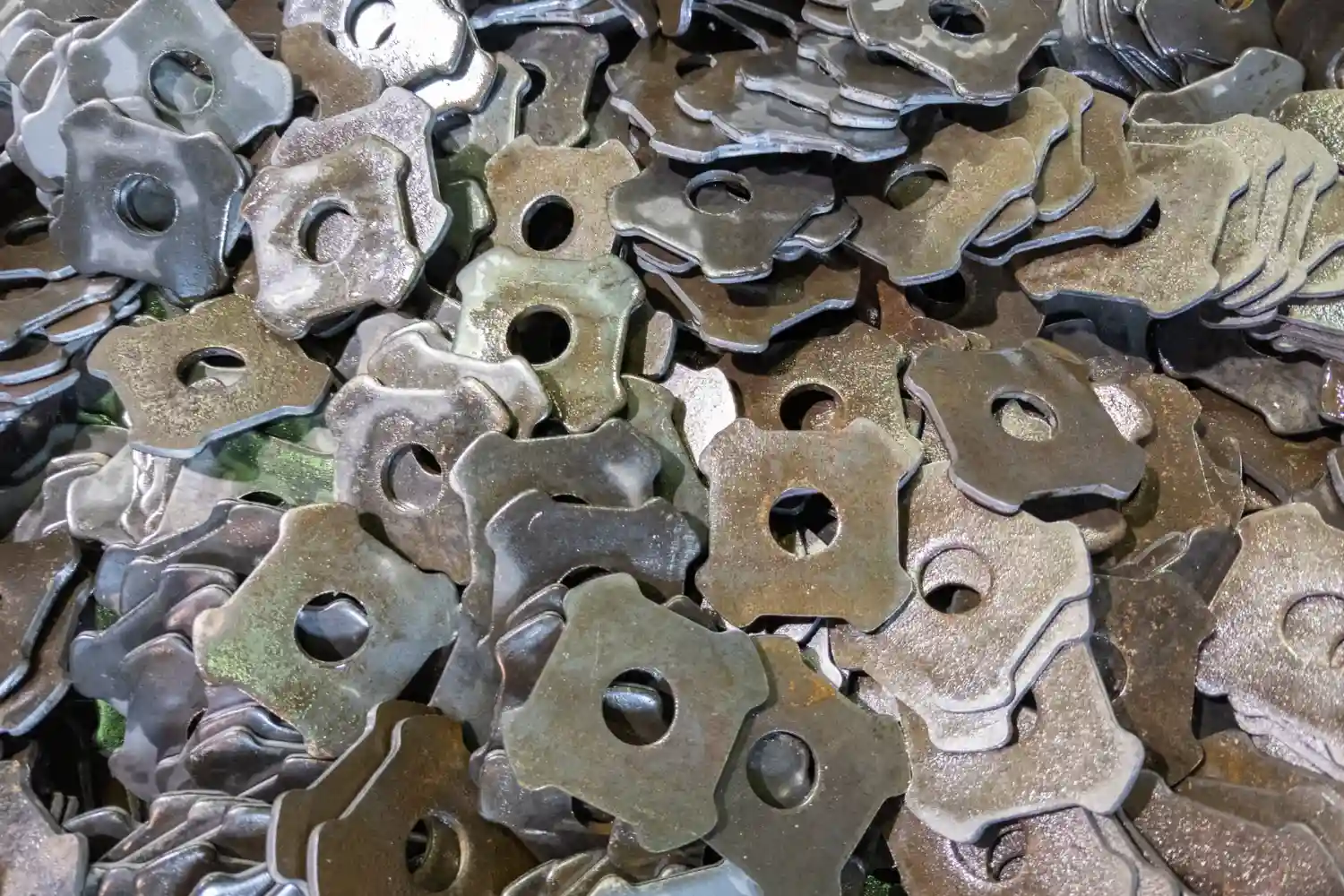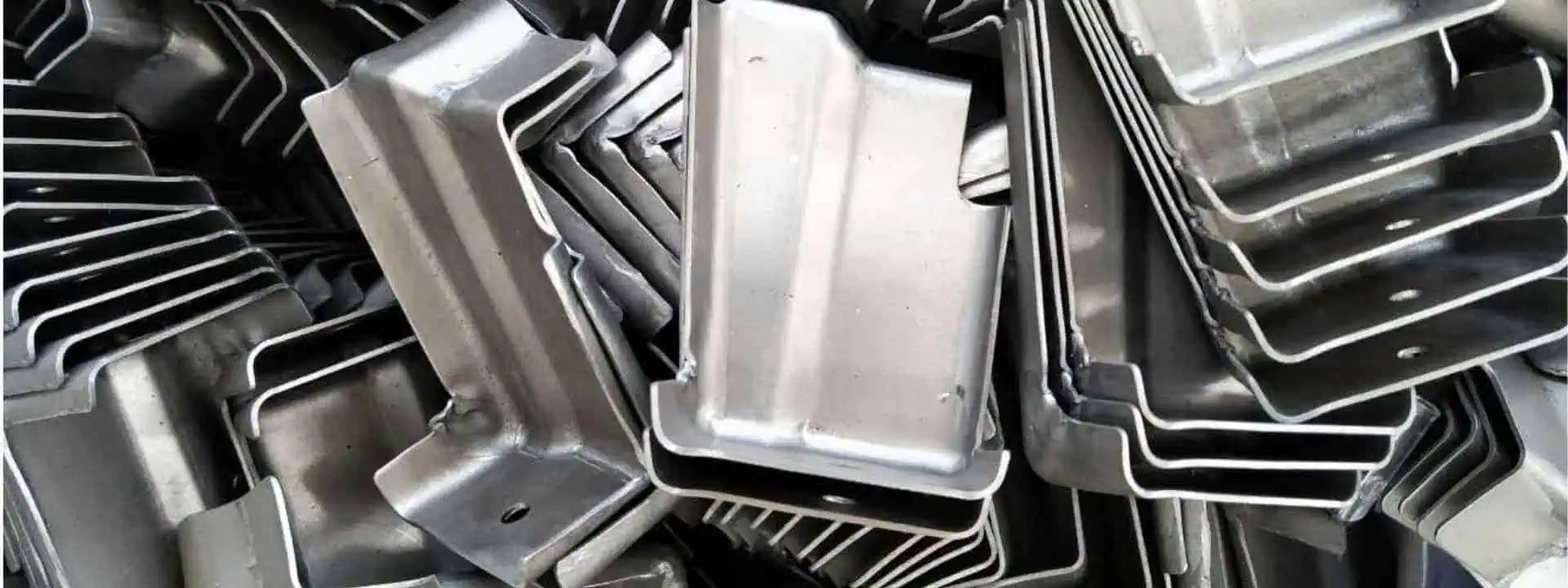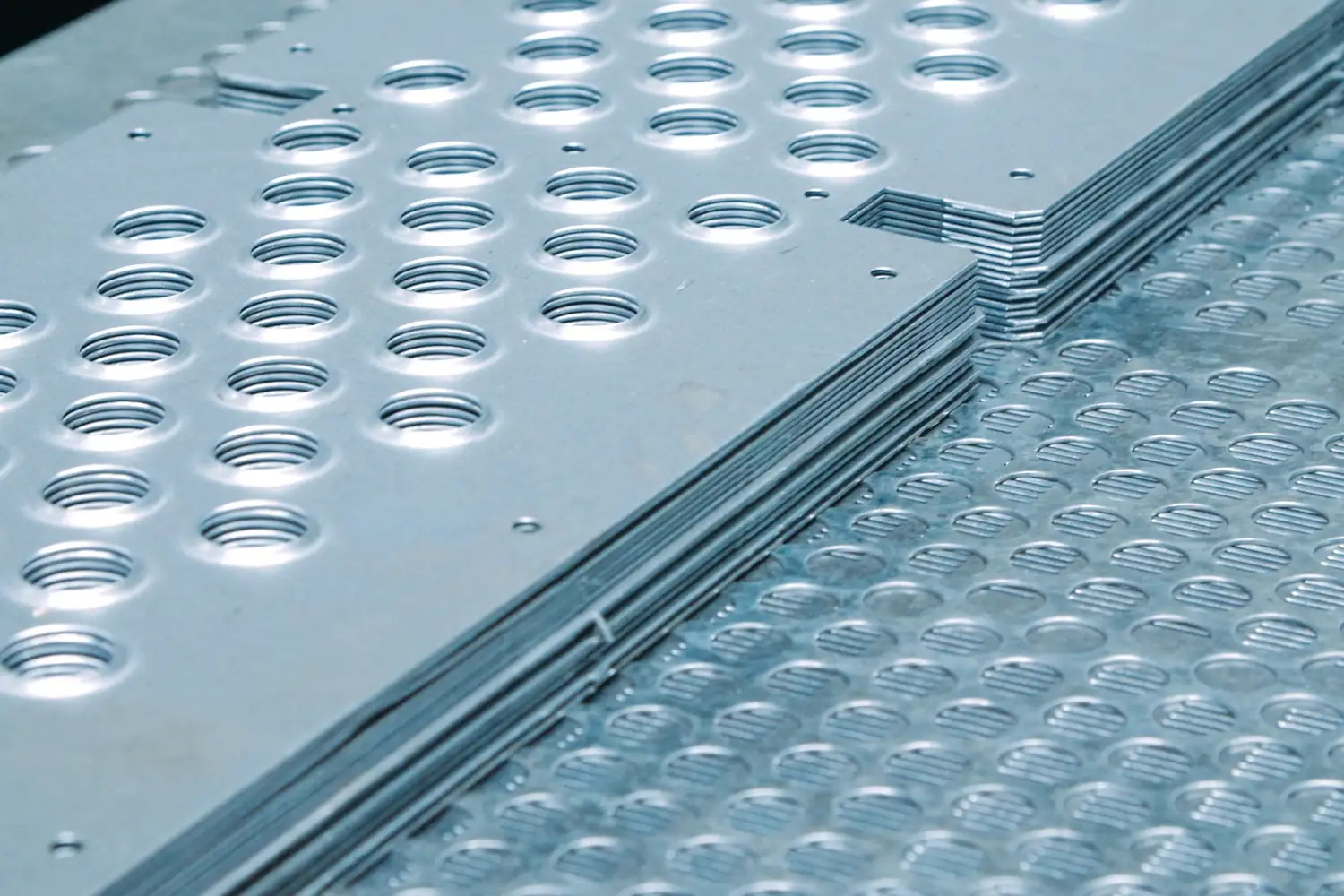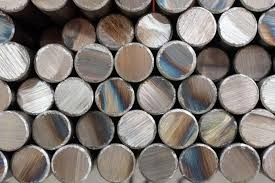Comprehensive Guide to Metal Stamping: Processes, Materials, and Applications
This blog provides an in-depth look at metal stamping, covering key processes, materials, and the advantages and disadvantages of this versatile manufacturing technique. It compares metal stamping with CNC machining, explores precision stamping, and delves into surface finishes, dies, machine types, and selecting the right supplier. Concluding with a guide on acquiring custom metal stamping parts, this blog aims to equip readers with the knowledge needed to make informed production decisions.
Understanding Metal Stamping
Metal stamping is not only shaping metals but also shaping industries nowadays. The designs are being updated every day, and the requirements are changing.
With the time being, metal stamping plays a crucial role in construction, automotive, and home appliances.
Metal stamping or metal pressing is a process that consists of a series of processes actually, including bending, punching, and blanking with tools and dies, coining, flanging, etc. The process gives the metal sheet the desired shape according to your design. It is one of the most used metal forming processes.
Precision Metal Stamping
Precision metal stamping is what it sounds like, a metal stamping process where the stamping is more accurate and has high precision. The process requires a die set and tool installed in a stamping press that ensures high speed, accuracy, and precision.
Most of the precision metal stamping parts are automated. As a result, the procedure becomes less costly as the need of manual labor is not necessary. Besides, because of this type of production, the products have fewer flawed parts produced with precision metal stamping.
If you are going to produce products with designs that may require high accuracy, metal stamping is an excellent choice to go with.
Materials Used On Metal Stamping
- Carbon Steel
- Stainless Steel
- Aluminum Alloys
- Copper Alloys
- Brass Alloys
- Nickel Alloys like Hastelloy, Inconel, Monel etc.
Surface Applied On Metal Stamping Parts
Aluminum Chromating
Aluminum Chromating is done mostly on aluminum metal stamping parts. It is done with aluminum converted into chromate. It can –- Reduce corrosion on the surface
- Be used for electrical conductivity
- Gives a good finishing
- Can be used as a base for painting if necessary.
Zinc/Zinc Nickel Electroplating
This is another popular surface applied on metal stamping parts. Either Zinc or Zinc Nickel layer is applied on the surface. For corrosion, you will need a chromate conversion coating too. Zinc or Zinc Nickel electroplating can –- Give a good look to your finishing with a silvery bluish appearance
- Prevents rust from the surface
- Increases metal durability
- Can be used for copper, brass, steel, iron, and many other materials
Advantages And Disadvantages Of Press Forming/Stamping Metal
- Because most of the stamping process is automated, you can produce your designs without much manual labor. As a result, the process is actually cost-effective.
- As the automated processes are used, the error is low, and you can hardly find any fault in the processed parts.
- For mass production, it is time-effective.
- The operation process is simple and easy. As a result, you don’t need much effort to get the job done successfully from the laborers.
- As the main process of metal stamping depends on the tool and die, new die making according to your design may be costly.
- The process of metal stamping is automated, and you should go for it when you only need mass production. For a lower volume of products, it will increase the cost.
- If the die is not good enough, the possibility of material thinning is high, which may cause errors in the production frequently. You should choose a good company to work with from the beginning to avoid that
Products Commonly Manufactured By Metal Stamping
- Metal cups and cans
- Metal cases and metal covers
- Automotive parts like connecting terminal, socket bush, oil valve, etc.

- Aeronautical parts like airframes, seat components, bolts, nuts, headsets, etc.
- Construction parts like brackets, clips, fuse boxes, heat sinks, etc.
- Lighting components like light frames, metal components, etc.
Choose The Appropriate Machining Method Between Metal Stamping And CNC Machining
Metal stamping is good for cold metals as the grains of the metal do not need to be hammered again and again. If you are thinking to choose between CNC machining and metal stamping, then you can find out which one is best for your production from the following points:
Design
If your product design is more complex, then CNC machining is best for production. Metal stamping is a good process for metal forming, but it may not get the complex and in-depth parts correctly.
Production Quantity
The production quantity matters. For lower volume production, CNC machining is a realistic choice as it reduces the cost. As metal stamping is basically automated, it is good for high-volume production.
Standard Tolerances
With CNC machining, standard tolerances are tight, and you can get a good design-oriented production. The tolerances for metal stamping are different from CNC machining.
Precision
Even with precision metal stamping, you may not get as good results as CNC machining. CNC machining is slow but has good precision.
So, if you are looking for high accuracy and lower volume of production, then you should go for CNC machining, while for high volume and standard tolerance levels of metal stamping is adequate, you can go for metal stamping.
Identify The Perfect Metal Stamping Process
Following is the sequence of working which can determine the perfect metal stamping process:
Design Process
The design drawing process should show all the parts of the product carefully in a flat 2-D way. Even the most complete parts should be drawn so that it can be seen in 2-D. Besides the axis and bending points, curve coordinates should be shown clearly in the drawing.
Correct Process
Each surface of a metal stamping process can have different requirements for treatment than others. Each one should be examined carefully with measuring the chance of getting the quality of the metal at its best. For example, punching diameter should maintain K-factor for perfect results. If you follow the variants and process the surfaces accordingly, then it will give you the perfect process for metal stamping.
Cutting Method
The cutting method for metal stamping should be of high accuracy and efficiency. The die punching and punching give the desired shape to a product. For best results in CNC machining, you should insert the design and give proper commands to the software according to the design. Like lasers or jet cutting may be used for cutting a board to give it a better finishing through metal stamping.
Stamping Sequence Formulation
This is the tricky part of the design principle where you need to design the stamping sequence according to the most effective and efficient manner. The sequence must go in such a way that an automated system may be introduced.
Assembly Method
Assembling the parts may require fasting or welding according to your design. You must find out which one is needed when. After that, you may proceed.
This is the total process of identifying the perfect metal stamping process.
Metal Stamping Process
- Separation
- Forming
Separation
Separation is the process of separating two parts of metal through punching. The process requires that the separated part should not lose quality as it will be used for further processing.Forming
Forming is using tools, techniques, and machines to give the separated part the desired shape according to your need which should be stated beforehand in your requirements and design. The two categories are sum total of many smaller processes like –- Blanking
- Embossing
- Coining
- Drawing
- Bending
Understanding Metal Stamping Die
A metal stamping die is made of tool steel, very hard steel which is used in cutting and forming metals in the precision metal stamping process.
Metal stamping can be used at a single node or at multiple nodes of production. It can be of two styles while you use them at only one station – Combination style or Compound style.

Combination Style
Combination Style dies to have multiple cutting points in one single die which can be used to execute an operation of cutting metal at multiple points in only one press. Usually, they take three seconds for one operation of a single press.
Compound Style
Compound style dies can execute cutting as well as drawing or bending with a single press. As a result, complex designs can be created with short wastages.
A multiple stations die can be very useful when you need one die to perform various operations like cutting, bending, coining, drawing, etc. It can be passed through various nodes and performed according to the program at each node.
Another kind of die is street rule die or knife die. This kind of die is used for cutting metal and holding the part which was cut in the die shoe. It is usually used for softer materials.
Types Of Metal Stamping Machines
Common metal stamping or pressing can be done with three types of machines:

Mechanical Machines
The mechanical milling system is used for separating the workpiece from a metal part with the help of a motor.
The machine is totally motor-oriented, and the whole process does not require any chemicals or heat. A metal stamping mechanical machine may vary from another in working speed and punching size.
Hydraulic Machines
Hydraulic machines are slower than mechanical metal stamping machines. They use pistons to manipulate fluids according to the design and die.
The machines are cost-effective and more accurate compared to mechanical presses. As a result, more complex designs can be benefited with hydraulic machines.
Mechanical Servo machines
These types of presses are most effective, accurate, and with the most customizable features. They do work with more speed than hydraulic presses.
The machines can be programmed for stroke and slide positioning. Advantages are quite clearly best with this type of press. But these are also the most expensive machines while you are looking for metal stamping.
Choose A Suitable Metal Stamping Supplier
If you are looking for a good metal stamping supplier, then you should evaluate your options from the following angles:
Capabilities
A good stamping supplier must have a wide range of stamping services, including bending, coining, embossing, drawing, etc.
Experience
Experiences do make a difference while you are looking for good metal stamping suppliers. An experienced supplier knows all the pros and cons of all the services and can suggest you accordingly.

Advanced Services
A good metal stamping supplier can have some advanced or additional services that may come in handy while you are metal stamping like heat treatment, painting, and coating, assembling, etc.
If you are looking for a good supplier then you must see if the company has the above-mentioned qualities. Only then you should proceed with your metal stamping requirement with them.
Custom Metal Stamping Parts
When initiating the acquisition of personalized metal stamping components, commence by precisely delineating your requisites. Explicitly state the dimensions, preferred materials, and any specific attributes sought. Delve into the investigation of reputable manufacturers, considering their extensive experience, specialized proficiency, and client appraisals. Initiate contact with multiple manufacturers to procure quotations, taking into careful consideration factors such as expenditure, production timeline, and supplementary services.
Before formalizing the commitment to production, meticulously assess prototypes provided by the selected manufacturer to appraise the quality. Validate their adherence to prevailing industry standards, certifications, and engage in negotiations pertaining to aspects like payment schedules and warranty agreements. Once content with the evaluation, proceed to formally place your order, supplying any concluding particulars.
In the course of the production phase, institute a meticulous quality control mechanism with inspections conducted at various intervals. Execute a judicious management of shipping logistics, ensuring the meticulous securement of packaging. Sustain open lines of communication, and post-receipt of the components, furnish constructive feedback to facilitate continual enhancements. By adhering to these procedural steps, one can proficiently tailor their acquisition of metal stamping components to align with their exact specifications.
Conclusion
You should look for a good quality supplier to get good metal stamping for your products.









